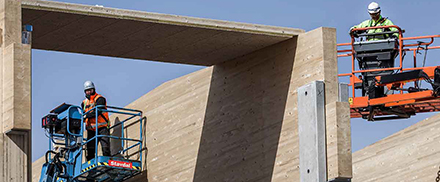A market study has revealed that more than 25 million tonnes of waste wood is generated in six European markets alone every year. About 30-35% of this comes from the construction and demolition of buildings while another 30% comes from wood processing industries: sawmills and other plants that process wood in their operations. More than 65% of this waste wood is turned into renewable energy, and while energy generation is a good method of wood disposal, governments and companies are looking for alternatives that add more value. Source: Timberbiz
“As with any new endeavour, there are challenges to finding new ways to reuse and recycle wood,” Olli Väntsi, Research and Development Manager at Stora Enso said. “For example, we need investments in new technology but also the right customer base for the new products that could potentially be made with recycled wood.”
Recently, new initiatives for turning “waste wood” into a valuable raw material have been popping up everywhere.
“Part of it has to do with regulation, of course: the EU, for example, has an ambitious goal to raise the recycling rate of construction and demolition waste to 70% by the end of 2020,” Mr Väntsi said.
“But there is also a general increase in circular economy thinking around the world. Next, we need to get to a point where the emissions from recycling wood are lower than from using virgin wood, and where using recycled wood is also more profitable.”
Waste wood is already recycled into panel boards (30-40% of waste wood in the markets included in the market study). But in the future, it could be made into various composites or broken down to cellulose and lignin that could be made into countless fibre-based products.
“Personally, I’m most excited about future possibilities of breaking our cross-laminated timber products, or CLT, back down to laminas that could then be used to make new CLT elements or other laminated wood products,” Mr Väntsi said. “The challenge here is that the recycled wood needs to be in just the right condition. We are working on various tools to understand how CLT, for example, ages while in use. As a fairly new product, no CLT elements have been part of a building for long enough to be recycled any time soon. But the potential is great: if we can do this, we could mass produce recycled CLT elements in the future.”
Circularity is more than reuse and recycling. It is also about designing for the entire product life cycle, including material choice.
Circularity offers interesting opportunities to create new service-based business models. For example, buildings can be designed so that construction elements are easily reused or recycled when the building is demolished decades later.
New business models can also include leasing and take-back programs.
“With products like CLT, for example, there is of course the element of longevity because these construction elements might be in use for decades to come,” Mr Väntsi said. “This means that we need to consider how we can ensure the potential take-back program is beneficial to all parties and can be organised in an efficient and meaningful way. But the potential is there.”








